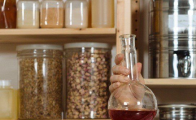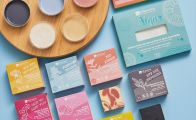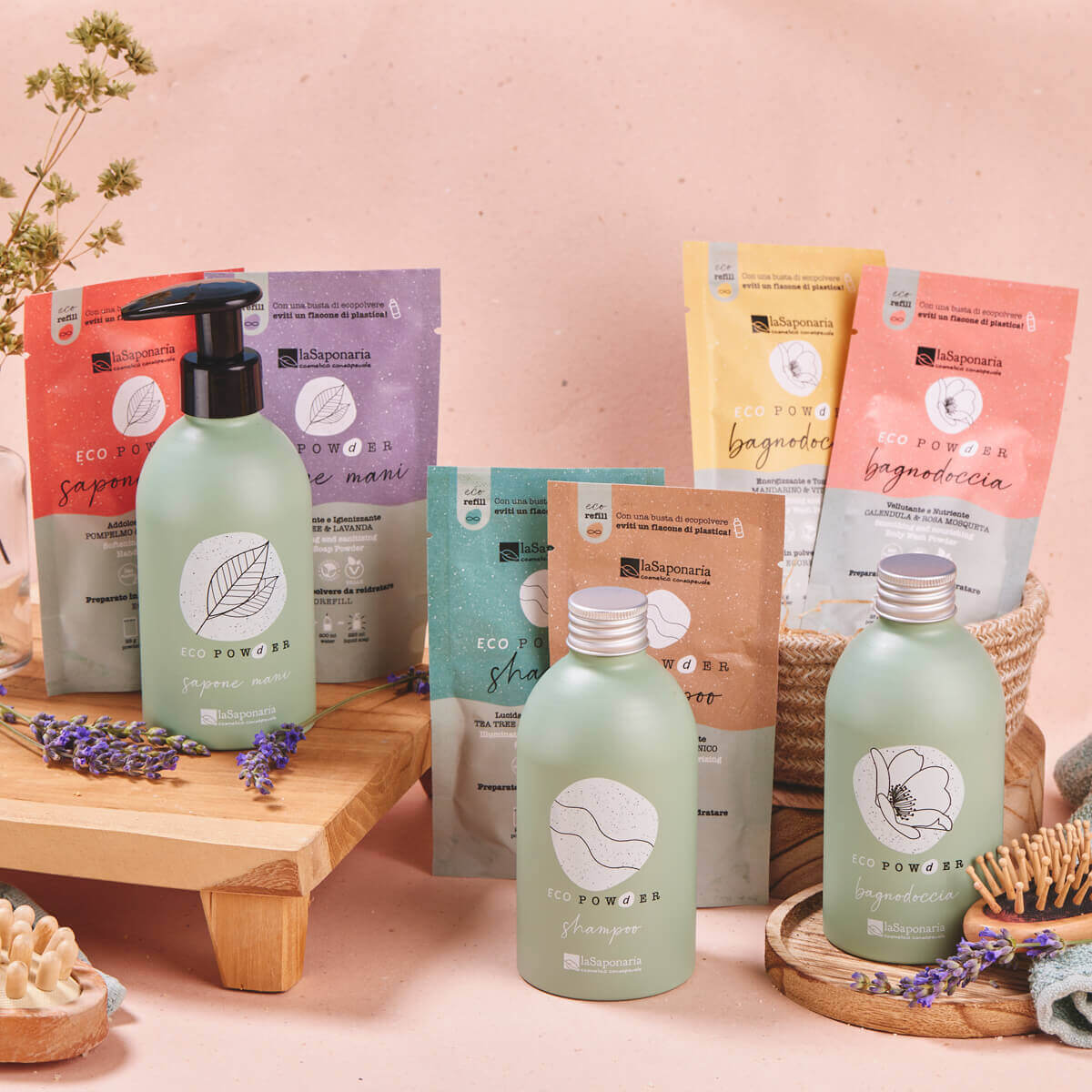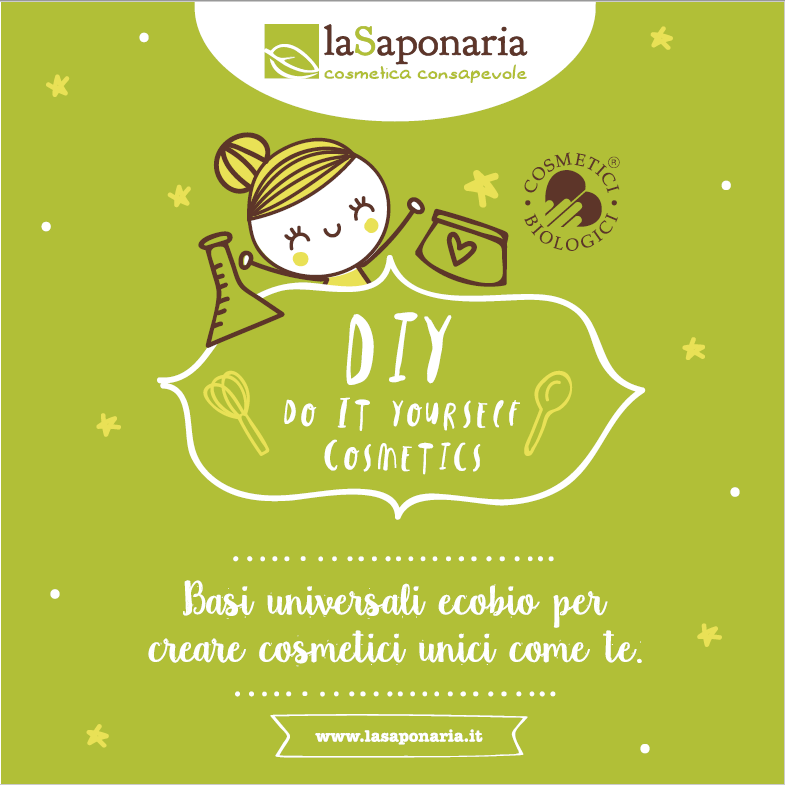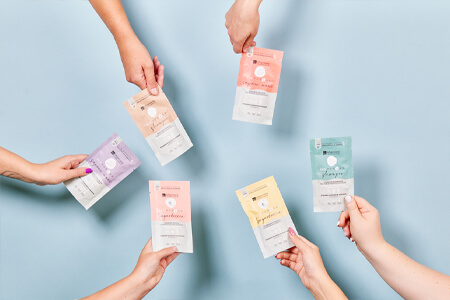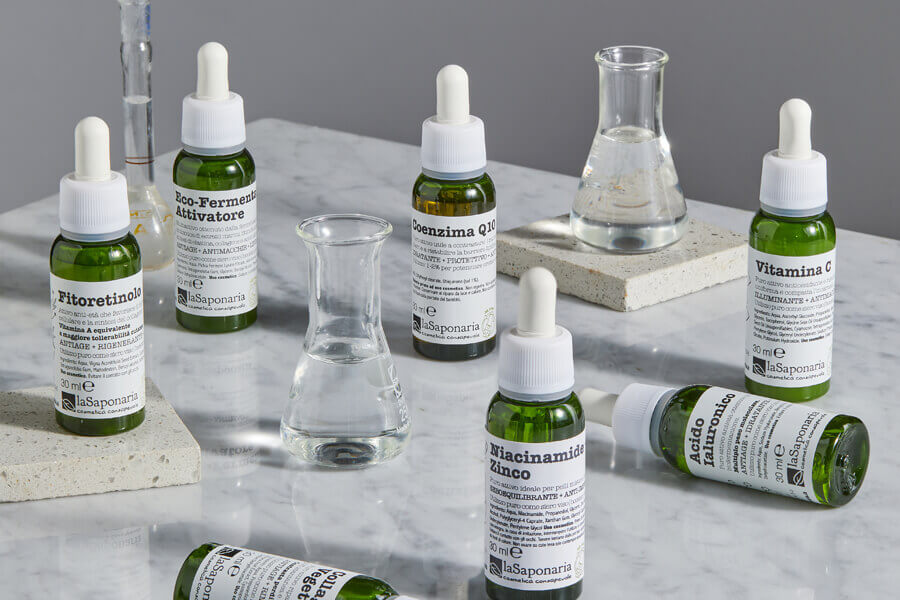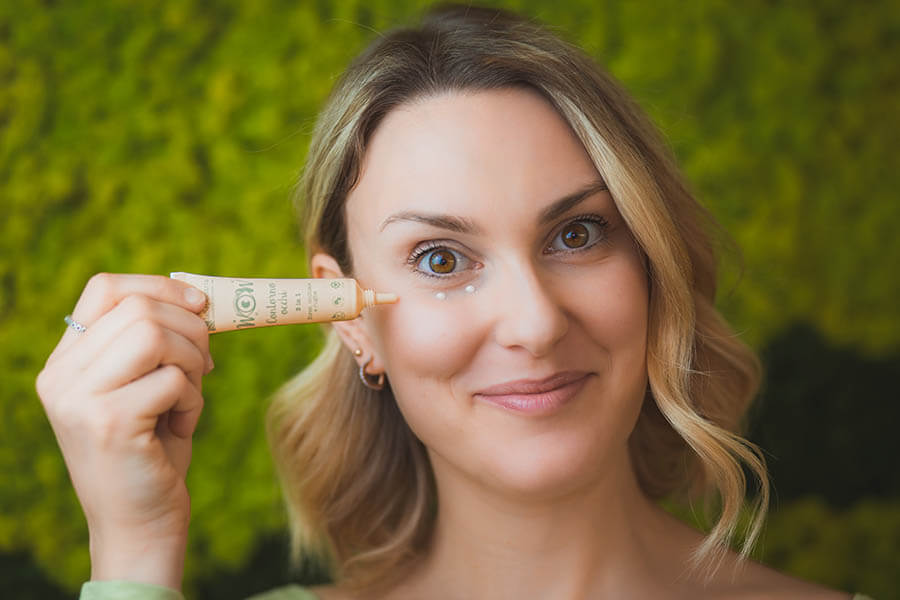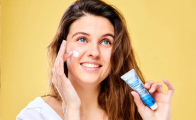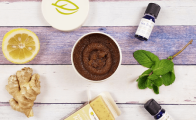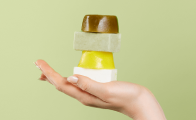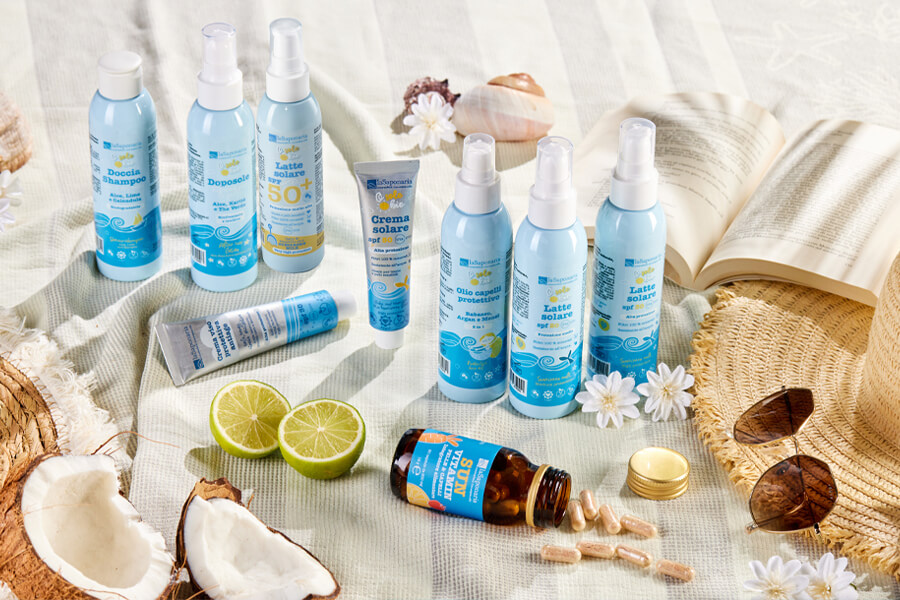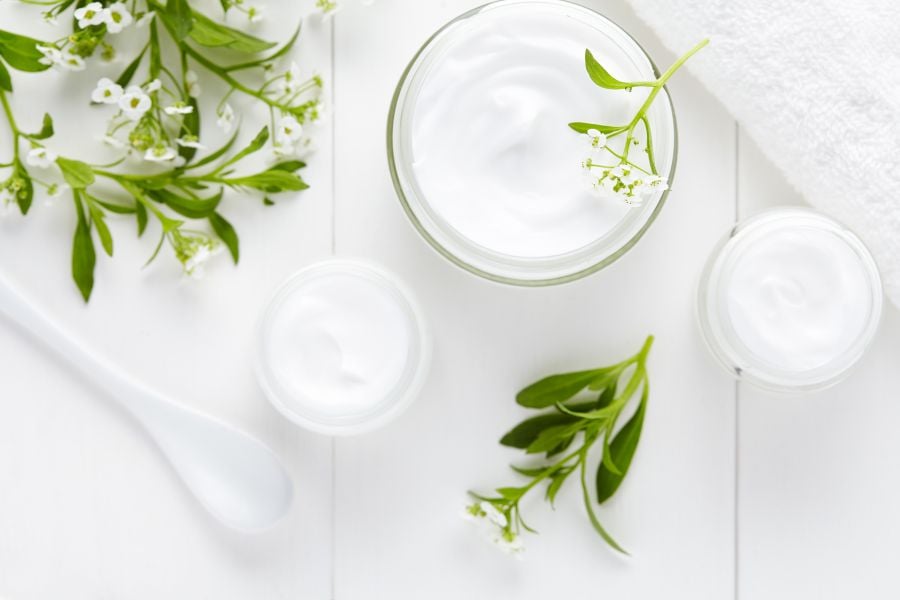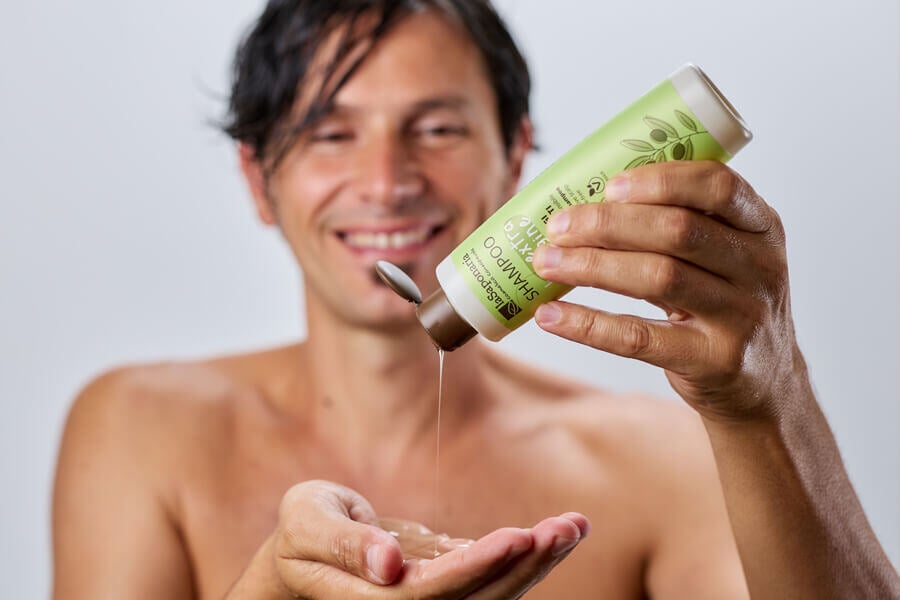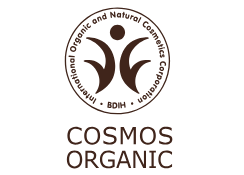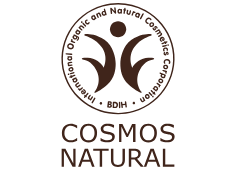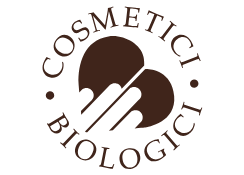The insights of La Saponaria
Sun creams without oxybenzone, parabens, silicones and even titanium dioxide: you can do without certain ingredients
Sunscreens are not to be trifled with: we all know that it is necessary to lather them up before going out in the sun. But which sunscreen to choose? And are organic sun creams with only physical filters equally safe? Of course! Let's see how and why many people choose sunscreen without oxybenzone, parabens, silicones or titanium dioxide and what the alternatives are.
When it comes to choosing a sunscreen, safety is a priority for everyone. In recent years, more and more people have been looking for sunscreens without oxybenzone, parabens and silicones. Now even a new ingredient has ended up at the centre of much controversy, titanium dioxide. Let's see together why and which alternatives are safe for the skin and the environment. In this article we will see:
- Sunscreens and the SPF
- Oxybenzone-free sun creams
- Paraben- and silicone-free sunscreens
- Titanium dioxide-free sunscreens
- Our choice in sunscreens
Sunscreens and the SPF
A premise must be made: all sunscreens on the market are safe. In order to be classified as sunscreens and thus be put on sale as such, they must pass tests assessing their effectiveness and establishing their SPF.
SPF stands for ‘Sun Protection Factor’ and measures how long a person can stay in the sun without getting sunburned compared to how long they could stay without protection.
For example, if a person can stay in the sun for 10 minutes without getting burnt, the application of a product with SPF 30 will allow him to stay in the sun for 300 minutes (i.e., 30 times longer) without getting burnt, provided the product is applied correctly and there are no other factors affecting the sun protection, such as sweat, water or friction.
However, it is important to note that the SPF is an indicator of protection against UVB radiation, which is responsible for sunburn. It does not provide information on protection from UVA rays, which can contribute to skin ageing and increase the risk of diseases. For this reason, it is always recommended to use sunscreen products that offer protection from both UVB and UVA rays, referred to as ‘broad spectrum’.
We discussed this in an in-depth article on our Instagram profile:
We therefore know that all sun creams on the market are safe and, depending on the information on the label, we know that they will protect us from UVB and UVA damage. But how to choose a sun cream?
Sun creams on the market may have chemical or physical sun filters: these are the ingredients that protect us from the sun's radiation. We discuss this topic in our in-depth article that is worth reading and can be found here.
Both creams with chemical filters and those with physical filters have ingredients that have come under the magnifying glass over time for various reasons. Many people today are looking for sunscreens without oxybenzone, or sunscreens without parabens or silicones, and lately also without titanium dioxide. But why have these ingredients come under the magnifying glass? Let's see it together!
Oxybenzone-free sun creams
Oxybenzone is a chemical compound commonly used as a sun filter in sun creams and also in other cosmetics. It is effective in protecting the skin from UVB and UVA rays, but over time, several scientific studies have come out highlighting its critical aspects.
Here are two of the most frequently cited examples:
- A study published in 2008 in the journal Environmental Health Perspectives found that oxybenzone can act as an endocrine disruptor, potentially affecting the human endocrine system. This study raised concerns about the possible relationship between the use of products containing oxybenzone and hormonal alterations.
Source: Schnitzler, P., Schönborn, J., Lehmann, L., Bresgen, N., & Gallé, J. (2008). Influence of benzophenone-3 (oxybenzone) sunscreen on the endocrine system and thyroid gland of male rats. Environmental Health Perspectives, 116(7), 879-884.
- Another study conducted in 2019 and published in the Journal of the American Academy of Dermatology examined the skin absorption of oxybenzone after the application of common sunscreen products. It found that oxybenzone can be absorbed through the skin and can accumulate in the body.
Source: Mattes, D., Wang, Q., Volksdorf, T., Zdzieblik, D., Schrader, A., Scherner, C., Proksch, E., & Mangelsdorf, I. (2019). Penetration of oxybenzone into the human epidermis after application in sunscreen spray formulation: effects of mechanical rubbing and epidermal barrier impairment. Journal of the American Academy of Dermatology, 81(3), 713-719.
It is important to note that the scientific debate on this topic is ongoing and that further research is needed to fully understand the effects of oxybenzone on human health.
However, this ingredient is also under scrutiny with regard to its impact on marine ecosystems, particularly corals. Here, too, we give just two examples:
- A study published in 2015 in the journal Archives of Environmental Contamination and Toxicology examined the effect of oxybenzone on corals in the Great Barrier Reef in Australia. It found that even small amounts of oxybenzone can damage corals, impairing their growth and causing bleaching.
Source: Downs, C. A., Kramarsky-Winter, E., Segal, R., Fauth, J., Knutson, S., Bronstein, O., Ciner, F. R., Jeger, R., Lichtenfeld, Y., Woodley, C. M., Pennington, P., Cadenas, K., Kushmaro, A., & Loya, Y. (2016). Toxicopathological effects of the UV sunscreen filter, oxybenzone (benzophenone-3), on coral planulae and cultured primary cells and its environmental contamination in Hawaii and the US Virgin Islands. Archives of Environmental Contamination and Toxicology, 70(2), 265-288.
- Another study published in 2018 in the journal Science of the Total Environment examined the role of UV-filters, including oxybenzone, in coral damage. It showed that these chemical compounds can increase oxidative stress and negatively affect coral health.
Source: Tsui, M. M. P., Leung, H. W., & Wai, T. C. (2018). Effects of UV filters and environmental hormones on primary hepatocytes isolated from green turtles Chelonia mydas. Science of the Total Environment, 619-620, 1266-1275.
These are just a few examples of studies that have shown the harmful effects of oxybenzone on corals and marine ecosystems. Research also continues on this topic, but in the meantime, some countries have banned the use of this ingredient and other chemical filters precisely to preserve coral reefs.
The Treaty of Hawaii
To protect marine ecosystems and corals in particular, the state of Hawaii passed a law in 2018 to ban the sale of sunscreens containing oxybenzone and octinoxate from 1 January 2021. The decision to take these legislative measures was driven by growing concern about the deterioration of corals and marine habitats caused by sunscreen products containing certain chemical ingredients.
Other countries, such as Palau and some of the US Virgin Islands, have followed in their footsteps and Palau, as early as 2020, banned the use of sunscreens containing these two ingredients, news we had followed closely and reported here.
Thus, in 2021, the Hawaii Treaty or Hawaii Reef Bill was born, banning sunscreens containing oxybenzone and octinoxate. Joining this treaty represents a shared commitment to protect one of the planet's most precious natural jewels and to promote sustainable practices in the cosmetics and tourism industries.
‘A lot of things kill coral reefs, but we know that oxybenzone prevents them from coming back,’ Craig Downs, one of the scientists in the 2015 study already mentioned in this article, explained to the New York Times. He added that this substance also affects sea urchins and kills algae, a food source for sea turtles.
It is therefore not surprising that many people today are looking for sun creams without oxybenzone.
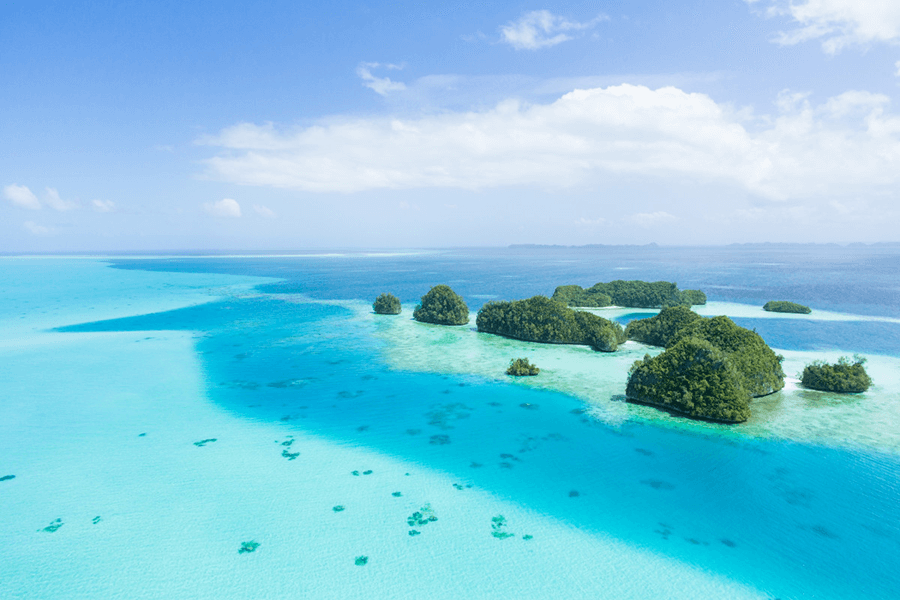
Other chemical filters commonly used in sun creams
It is possible that in the coming years other chemical filters will come under the magnifying glass of research and perhaps be flagged in the Hawaiian Treaty as critical. In particular:
- Avobenzone: although commonly used as a sunscreen, concerns have been raised about its chemical stability and potential impact on the marine environment.
- Octocrylene: is a widely used ingredient in sunscreen products, but there have been concerns about its biodegradability and negative effects on the marine environment.
- Benzophenone: Some studies have suggested that this sun filter may have harmful effects on marine organisms and coastal ecosystems.
Paraben- and silicone-free sun creams
Many people are looking for sunscreens without parabens and silicones.
Parabens are a class of preservatives used in cosmetics and other personal care products to prevent the growth of bacteria, moulds and yeasts. However, parabens have been the subject of health and environmental concerns.
Silicones, on the other hand, are a class of chemical compounds often used in cosmetics for their water-repellent, emollient and protective properties. Although silicones are generally considered safe for cosmetic use, some people prefer to avoid them due to environmental concerns or because they can cause a build-up of residues on the skin.
You can read our in-depth discussion on this topic here: Silicones in cosmetics: everything you need to know about choosing or avoiding them.
The main reasons why parabens and silicones end up in the magnifying glass when it comes to the choice of sunscreens depends mainly on:
-
Skin allergies and sensitivities: some people may be sensitive to parabens and silicones and may experience skin irritations, rashes or other dermatological problems due to these ingredients. Choosing sunscreens without parabens and silicones can help avoid such unwanted skin reactions.
- Health concerns: parabens have been the subject of concern as some studies have suggested that they may be associated with endocrine disruption and other adverse effects on human health. Although research is still ongoing, many people prefer to avoid using products containing parabens as a precaution.
- Environmental concerns: parabens and silicones can have a negative environmental impact once they have been washed away and end up in sewage drains. Some people prefer to use products that are more eco-friendly and biodegradable, thus reducing their impact on the environment.
Titanium dioxide-free sunscreens
Titanium dioxide is an inorganic chemical compound and its formula is TiO2. It is a white solid, insoluble in water and widely used in various sectors, including cosmetics, food, pharmaceuticals and industry. Here are its main uses:
- Sun filter: is one of the most common physical sun filters used in sunscreen products. It acts by reflecting and dispersing the sun's rays, thus protecting the skin from damage caused by UV radiation.
- Pigment: is used as a white colouring agent in cosmetic products, such as moisturising creams, foundations, powders and other make-up products, to give them a lighter, matt shade.
- Food additive: it is used as a food additive (E171) to impart white colour to a wide range of food products, including candies, chewing gum, sweets, dairy products and pharmaceuticals.
- Inert: due to its chemical inertness, titanium dioxide is also used as a filler in plastics, paints, coatings, paper, rubber and other materials to improve their mechanical and optical properties.
In 2021, Efsa, the European Food Safety Authority, concluded its re-evaluation of E171, deeming it unsafe as a food additive. In particular, the criticisms raised concerned the emergence of evidence of its genotoxicity, i.e. the ability of a substance to damage the DNA of cells, resulting from indigestion and the accumulation of its particles in the body.
Titanium dioxide can therefore no longer be used in Europe as a food additive, but its use has never been found to be critical as a cosmetic ingredient, so its use is totally safe as far as cosmetics are concerned.
Many people today, however, also look for sun creams without titanium dioxide.
Osolebio sunscreens are of course free of oxybenzone, parabens, silicones
and we do not even use titanium dioxide
Our choice in sunscreens
When we tried our hand at formulating sunscreens, our choice fell on physical filters because
- They have a safer toxicological profile, do not interact with the skin and are potentially less allergenic. The possibility of using them alone in a sunscreen product considerably reduces the risk of individual skin sensitisation, which makes them suitable and highly compatible for the delicate skin of children;
- They are Eco-sustainable, in line with what we believe in! They do not have the devastating effects on aquatic flora and fauna of chemical filters that remain afloat and prevent the sun's rays from penetrating the water, killing plants and algae and depriving fish of food. And they have no impact on coral reefs or other delicate marine ecosystems.
La Saponaria's ‘Osolebio’ sun creams are therefore oxybenzone-free and without any chemical filters, they do not contain any parabens or silicones inside, which are not allowed by the organic specification and which we never use in any of our formulations, and they are also titanium dioxide-free.
Although this ingredient is not critical for health or the environment, we have chosen to use another physical filter, zinc oxide, in our sun formulas.
Zinc Oxide
It reflects both UVB and UVA rays. It appears as a white powder and can be found in numerous cosmetics for its antibacterial, soothing and barrier properties. It is very well tolerated by the skin, so much so that its most common and well-known use is in the zinc oxide paste that is used for nappy changes on small children.
We also find it in many make-up products for its pigmenting power.
The intrinsic characteristics of zinc oxide make it an excellent sunscreen,
capable of ‘blocking’ UV rays and their harmful action.
The Haereticus Enviromental Laboratory (HEL), is a non-profit scientific organisation dedicated to increasing scientific, social and economic knowledge of natural environmental habitats in order to conserve and restore them. HEL itself has designed a certification called ‘Protect Land + Sea’ that certifies various sunscreens as safe, including those containing Zinc Oxide (non-nano).
All La Saponaria sunscreens have non-nano sunscreens in them, and indeed, the zinc oxide in the formula was subjected to a study that showed that its composition does not endanger coral reefs or the marine ecosystem in general because the residual concentrations are much lower than those harmful to the aquatic environment.
We chose it because of this and also because it has proven to be extremely safe for the skin, passing all the numerous tests we subjected it to brilliantly.
And if physical filters in the past were pasty and difficult to spread and could leave a white trail, today's sun-milk formulations have proven to be very comfortable, child-proof and do not leave a white trail: the ghostly effect is now a distant memory!

Written by Simona
She is La Saponaria’s digital writer: always juggling a newsletter to send and a blog article to publish, she lovingly takes care of our social media channels and our e-commerce.



